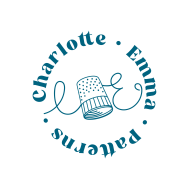Ok guys, I’ve been busy scheming and I’ve got some plans to share with you today that I’m really excited about.
Lately, I’m really excited about natural dyes. There is some really exciting stuff happening in the knitting community with natural dyes, but I’ve seen less amongst sewists. I think probably because wool takes natural dye more effectively than any other fibre, and also because it’s easier to handspin your own balls of wool/yarn (which then is likely to lead to you wanting to dye that wool) than it is to create fabric.
I’m certainly not going to start making my own fabric, but I am going to start personalising some of the fabric I buy by hand dyeing it.
What are natural dyes?
Natural dyes are dyes produced from organic matter, including flowers, leaves, fruit, vegetables, roots, bark, nuts and seed. Insects are also a common source of natural dye (e.g. cochineal) but won’t be explored by me.
Dyed fabrics dating back thousands of years have been found in Egypt, China, and India; the Romans left written records on the use of natural dyes, dyes still used today: madder, indigo, and weld.
Why natural dyes?
The reason I’m excited to work with natural dyes – as opposed to synthetics – is that there is a real unpredictability and uniqueness to the colours produced. Even if I’ve referred to a book or website in advance to check the colour a dye stuff will produce it will only be a guide, as everything from the condition the plant grew in, my treatment of it, and the fabric I use, will have an impact on the colour of dye produced.
I also love the fact that I will be growing or gathering the substance of some of my dyes, so they’ll be truly home made.
A Naturally Dyed Wardrobe
So, over the course of this year, I’m going to be blogging about my own progress with natural dyes.
It’s my intention to grow a number of sources of dye in my garden, to gather some locally (I’ll only be gathering weeds, so won’t be interfering with any wild plants), and to use a few easily accessible sources of dye that can be purchased from the supermarket.
I’ll be blogging my progress growing and gathering, and showing the results of my experiments using my home made dyes to dye fabrics (as well as the odd ball of wool/yarn), and finally I’ll be blogging some finished garments made with my hand dyed fabrics.
Participate
If you’re also excited to try natural dyeing I’d love it if you’d join me.
I’ll be blogging various practical tutorials over the course of the year and be signposting useful books and blogs.
There are no rules. Perhaps you’d like to give natural dyeing a try with an easily obtainable source of dye from the supermarket (such as onion skins), maybe you’d like to join me in introducing a new plant in your garden (or taking advantage of one that’s already there) and using that to create a dye, or maybe you’d like to find a good use for weeds (or an invasive plant like ivy) that you have easy access to.
If you are planning to join in, tell me your plans in a comment below and/or on your own blog. Join me in sharing your plans and progress using #naturallydyedwardrobe on social media or via email. I’ve made a little blog button if you’d like to shout about participating:)
I’ll be back soon with a post on my more detailed plans for the year. Lots of list making has been taking place here!
Blog button & code


